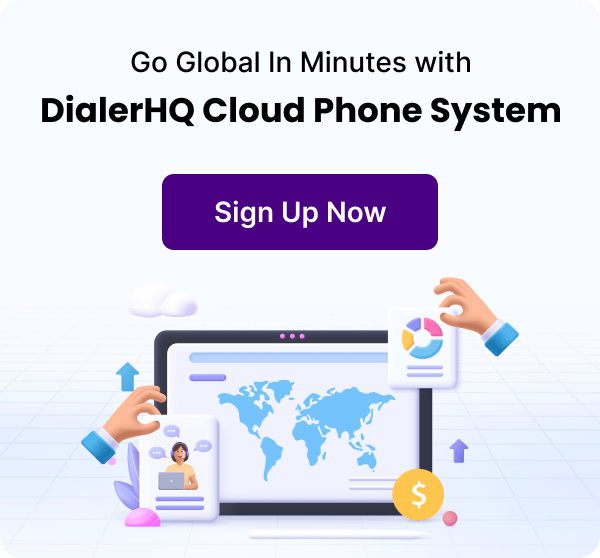Senior Writer: Sindhu Bharathi
Despite the evolution of social media platforms and chatbots, more than 90% of customers prefer talking to an agent for any queries.
From handling customer calls to product support and market research, a call center is one of the most happening places. There are two types of call centers: inbound and outbound call centers.
In this blog, we have outlined the operations of inbound vs. outbound call centers and tips for improving call center performance. If you are exploring the key differences between inbound and outbound call centers, read the blog to learn more.
What is an Inbound Call Center?
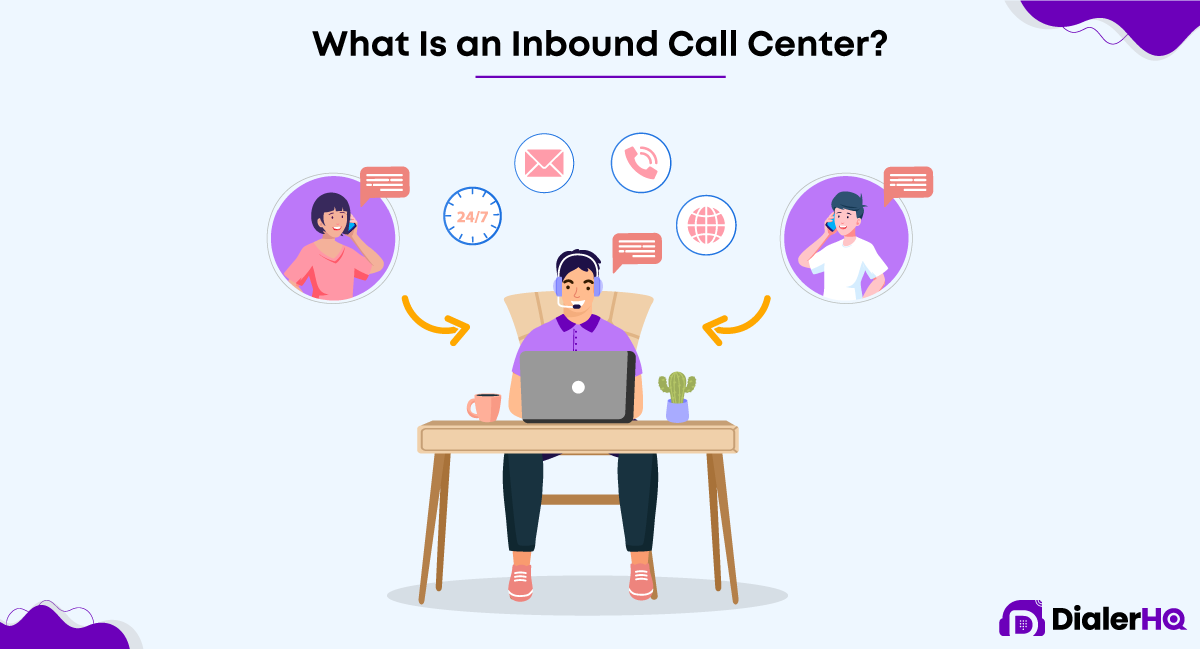
An inbound call center functions to handle customer support requests like product or service inquiries, problem resolution, incoming sales requests, technical support, etc. The main objective of inbound call centers is to enhance the overall customer experience and loyalty by offering timely assistance and support.
Inbound call center agents work closely with customers and help resolve their queries efficiently and swiftly. Their key focus lies in handling customer concerns and service-based requests. Most inbound call centers offer omnichannel customer support, letting customers connect with them through phone calls, emails, social media channels, SMS, etc.

"When you scale your business operations, it might be difficult to handle the high volume of calls. In some businesses, it may be essential that you make efforts to promote your products and services to your customers and prospects frequently. Whether you require inbound or outbound call centers depends on the specific needs of your business. However, you must invest in efficient call center software with advanced features as they would help increase the agent's productivity, efficiency, and sales."
Steps Involved for Making Inbound Calls
Most of the inbound call centers follow the below steps.
- The customer or prospect reaches out to the business.
- Inbound call center agents are at the receiving end of the calls.
- In startups and small businesses, where the volume of customer calls is low, the call center agents pick up the call and resolve their queries directly. In contrast, large enterprises that usually endure a high volume of calls use recorded greetings, ACD (Automated Call Distribution), and IVR systems to answer the customer’s call and route them to the appropriate agent.
Inbound call centers generally rely on technologies like call queuing, automatic call distribution, IVR systems, etc., that have the power to sort out a high volume of incoming calls.
Types of Inbound Calls

Most inbound calls can be brought under these types.
- Customer service requests
- Inbound sales
- Technical support
1. Customer Service Requests
A majority of inbound calls are initiated by customers when they require support and assistance with payments, billing, membership, account details, dispatch, order processing, etc.
2. Inbound Sales
Most websites and lead-generation campaigns direct customers and prospects to their call center agents. Inbound sales calls are initiated by customers who hit upon such campaigns and develop an interest in the product or service offerings of your business.
You May Also Read : Artificial Intelligence in Call Center
Engaging a B2B lead generation agency can further refine these campaigns, ensuring that the right audience is reached and increasing the likelihood of high-quality inbound calls.
3. Technical Support
Customers may seek technical support and assistance in deploying the product and service offerings of a business.
What is an Outbound Call Center?

Unlike inbound call centers that experience high incoming call volumes, outbound call centers make more calls to customers and prospects. They mainly focus on reaching out to more prospects and customers and generating more sales. They also focus on creating awareness of your product or service offerings and enhancing the visibility of your business.
Using data received from customers and prospects, outbound call center agents make cold calls and sales calls to explain the business offerings. Studies show that retaining an existing customer is 5 to 7 times cheaper than acquiring a new customer. So, outbound call center agents use data of existing customers and educate them about new products or upgrades.
Typically, outbound call centers use CRM (Customer Relationship Management) software to streamline their customer interactions. They reach out to their prospects in several ways, like phone calls, messages, emails, social media channels, etc.
The focus of outbound call center agents is totally different from that of inbound call center agents. They mainly focus on sales, and the call center agents are educated and trained to reach out to prospects, generate leads, and convert them to customers.
You May Also Read : Call Center vs. Contact Center: Key Differences
They are also trained in promoting new products and selling upgrades to existing customers.
As the agents are the ones who initiate the calls, unlike the inbound call centers, they usually have targets. Outbound call centers depend on power and automatic dialers to enhance operational efficiency and reduce agent burnout.
While evaluating inbound vs. outbound call centers, one must note the timing of their operation. Most inbound call centers function 24*7 as customers may reach out to them anytime. On the other hand, outbound call centers function only during business hours as it is unethical to disturb the customers beyond their working hours. This is an important point of difference between inbound and outbound call centers.
Steps Involved for Making Outbound Calls
Most outbound calls take the following approach.
- Call center agents use ML algorithms to pick a customer or prospect from the available database.
- They then use the power or predictive dialer to dial the customer using their data automatically.
- One of the following is bound to happen – the calls may be answered, the customer may be unavailable, the phone line may be busy, etc.
- When they use predictive dialers, the agent is connected to the call only when the customer picks it up.
- The agent elaborates on the features and functionalities of the product or service offering and endeavors to promote more sales.
Types of Outbound Calls
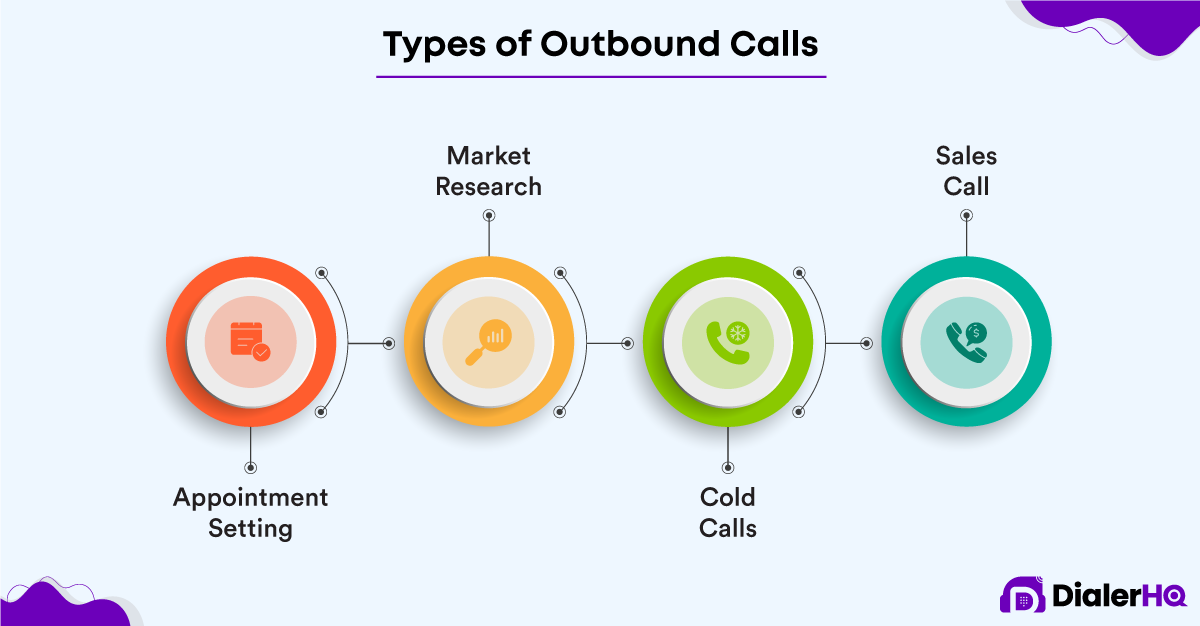
Outbound calls can be categorized under the following.
- Appointment setting
- Market research
- Cold calls
- Sales call
1. Appointment Setting
Here, the main goal of the outbound call is to fix an in-person appointment or call between the prospective customer and the sales representative to elaborate on the features and functionalities of their offering.
2. Market Research
Businesses make outbound calls to reach out to customers and collect feedback about a product or service they consumed.
3. Sales Calls
Businesses often make calls to pitch their product or service and generate leads. The ultimate aim of such calls is to promote their offerings and make a sales pitch.
4. Cold Calls
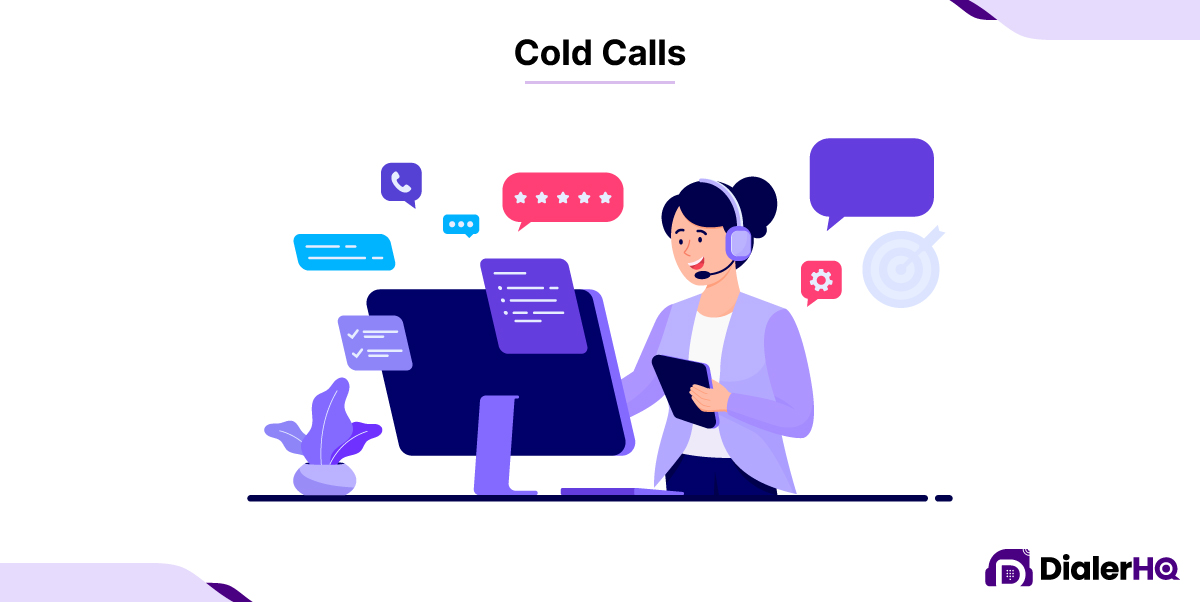
Sometimes businesses attempt to connect with leads they have no prior relationship with to acquire new leads and customers. They are called cold calls.
What is the Difference Between Inbound and Outbound Calling?
If you are in the process of setting up a call center for your business, understanding the inbound and outbound call differences is crucial. Following are the important differences between inbound and outbound call centers.
1. Inbound vs. outbound calls
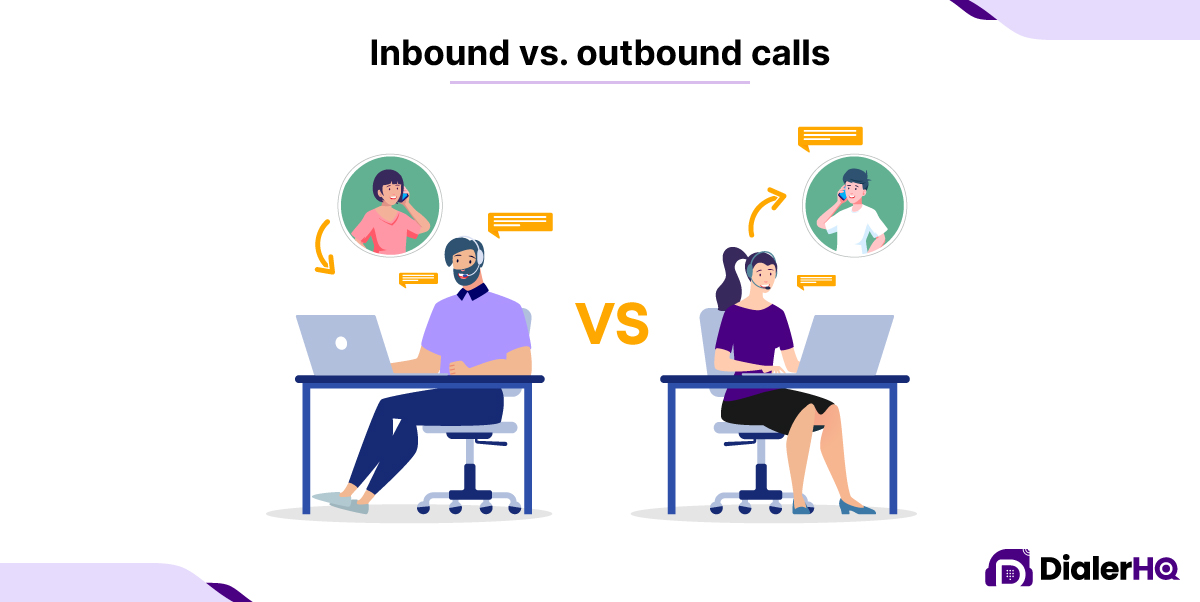
Inbound calls encompass those calls made by customers or prospects to get their questions answered and problems resolved. On the other hand, outgoing calls are made by customer care agents to reach their prospects or customers.
2. Purpose
A majority of inbound calls are related to customer service requests, while most of the outbound calls are related to sales and marketing. Overall, inbound calls can be service/product inquiries, inbound sales, technical support requests, etc., and outbound calls can be reminders, appointment scheduling, payments, lead generation, etc.
3. Interaction
Inbound calls are usually initiated by customers whenever they encounter a challenge in using a product or service offerings of a business. On the other hand, outbound calls are initiated by customer care agents, and they can take the form of cold calls, sales calls, market research, etc. This is an important point when it comes to understanding inbound vs. outbound calls.
You May Also Read : Seamless Communication: VoIP Call Center Solutions
4. Key metrics of inbound vs. outbound call centers
While the inbound calls and outbound calls differ by their very nature and purpose, the following are the key differences between inbound and outbound call center metrics.
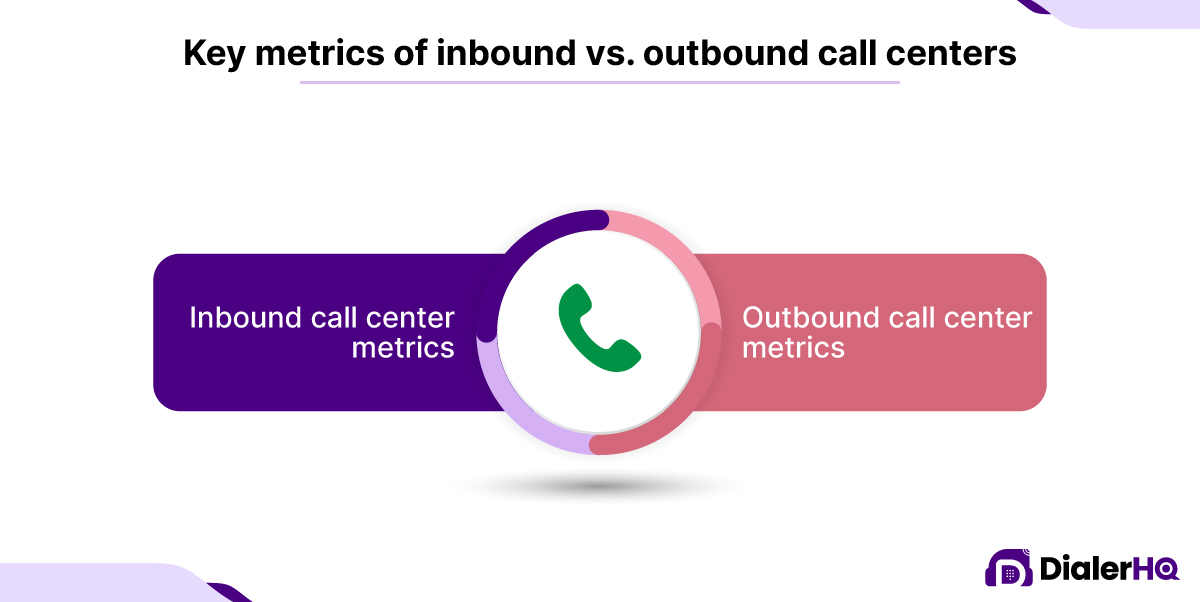
- Inbound call center metrics: Following are some of the important inbound call center KPIs and metrics – First call resolution (FCR), Average call transfer rate, Average wait time, Customer satisfaction score, Customer retention rate, etc.
- Outbound call center metrics: Conversion rate, Cost per acquisition, Occupancy rate, Hit rate, First call close, Lead conversion rate, Lead response time, Occupancy rate, etc., are some of the important outbound call center KPIs.
5. Focus of inbound vs. outbound call centers
Inbound call centers focus on customer service and technical support, while with outbound centers, the main focus is on sales and generating leads.
6. Technologies used by inbound vs. outbound call centers
Inbound call centers rely on advanced call management features, including call monitoring, IVR systems, call transfer, call queuing, automatic call distribution, etc.
On the other hand, outbound call centers use advanced dialer tools like predictive dialers, SMS reminders, CRM integration, click-to-call abilities, call recording, custom caller ID, etc.
Benefits of Inbound and Outbound Call Centers
Call centers have the power to streamline customer conversations and promote trust in customers’ minds. In the following section, we have outlined the advantages of inbound and outbound call centers.
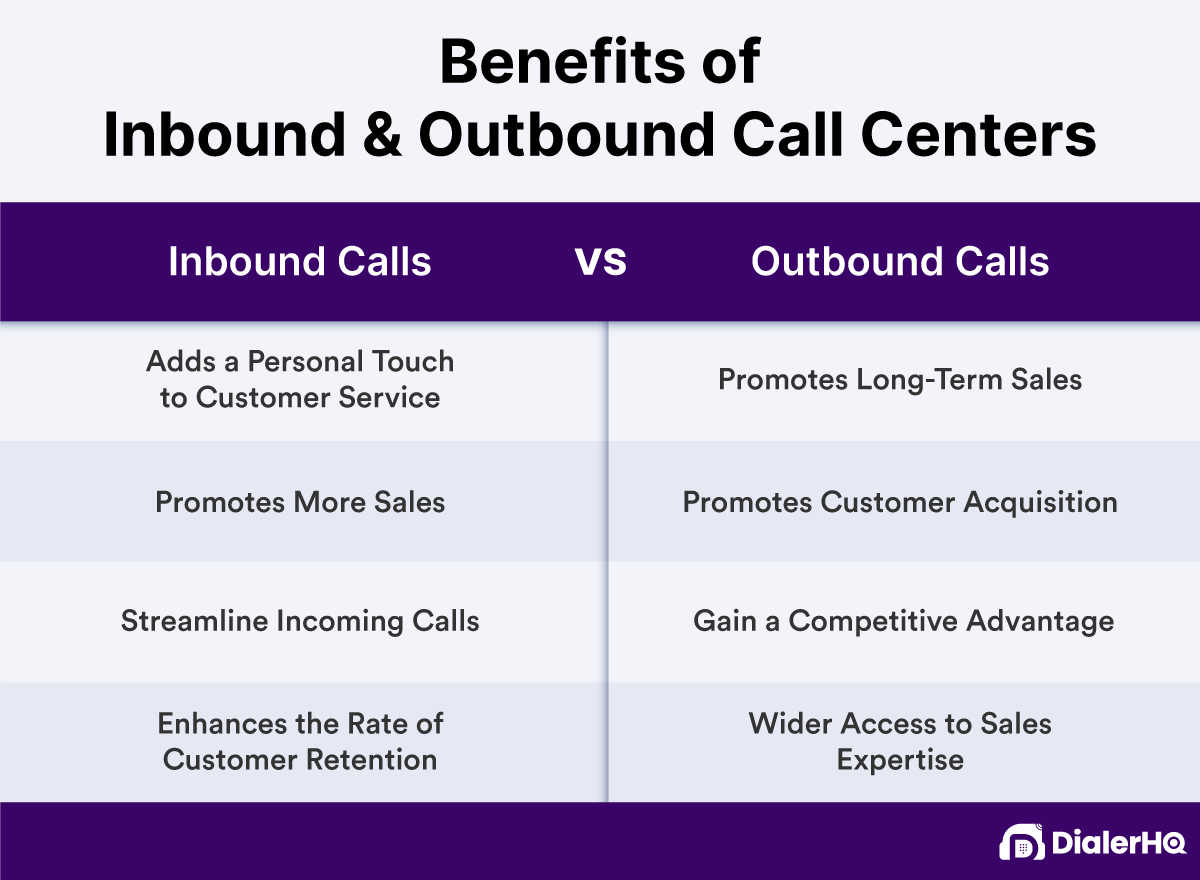
Inbound call centers
1. Adds a personal touch to customer service
When you have an inbound call center, customers get to interact with a real person and seek support and assistance. This adds a personal touch to your business and enhances its reputation. An Accenture report revealed that 83% of customers prefer live calls over chat and other mediums.
As a majority of customers enjoy the comfort of talking with a real person, call centers play a crucial role in promoting customer satisfaction and business growth.
2. Promotes more sales

People get questions and doubts when they learn about a product or service through a website or advertisement. Though there are FAQ sections on the website or YouTube channel of the business, nothing matches a real-time call.
In that case, it becomes important to answer customer questions as it may enhance the probability of a sale. Otherwise, you might lose out on sales from customers who would like to have a word with a live agent before they make a purchase.
3. Streamline incoming calls
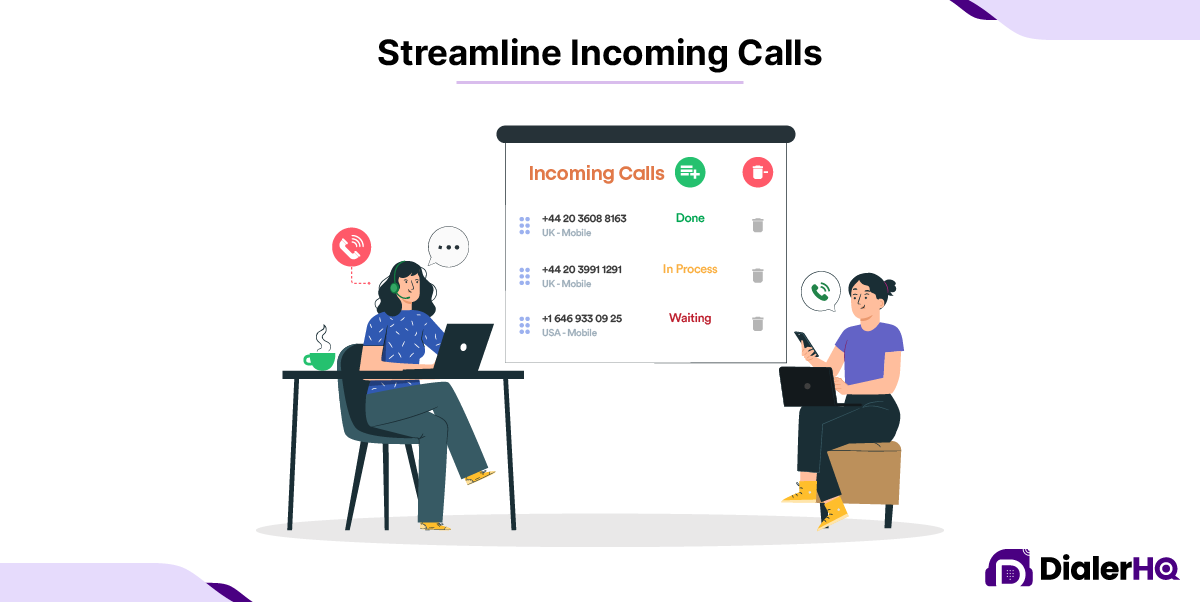
In the beginning, when you start up, you might have fewer customers, and it might be possible for the core team to handle business calls by themselves. But as the business scales, there will be an increase in call volume, and it may distort the focus of the core team.
Having an inbound call center helps streamline the high volume of incoming calls and offloads the burden from your core team so they can focus on critical business operations.
4. Enhances the rate of customer retention
As mentioned earlier, it is five times more expensive to acquire a new customer than to retain an existing customer. As inbound call centers help in the swift resolution of customer queries, they are more likely to stay on with the brand for longer, and this enhances customer retention rates.
You May Also Read : What is Call Center Monitoring and Why is it Important?
Outbound call centers
1. Promotes long-term sales
As outbound call centers have a dedicated team getting in touch with prospects, leads, and customers, they promote sales and conversions.
Outbound call centers help create awareness about new products and so increase the conversion rate. When customers know your business offerings in and out, they are likely to buy more which in turn will enhance the average value per customer.
2. Promotes customer acquisition
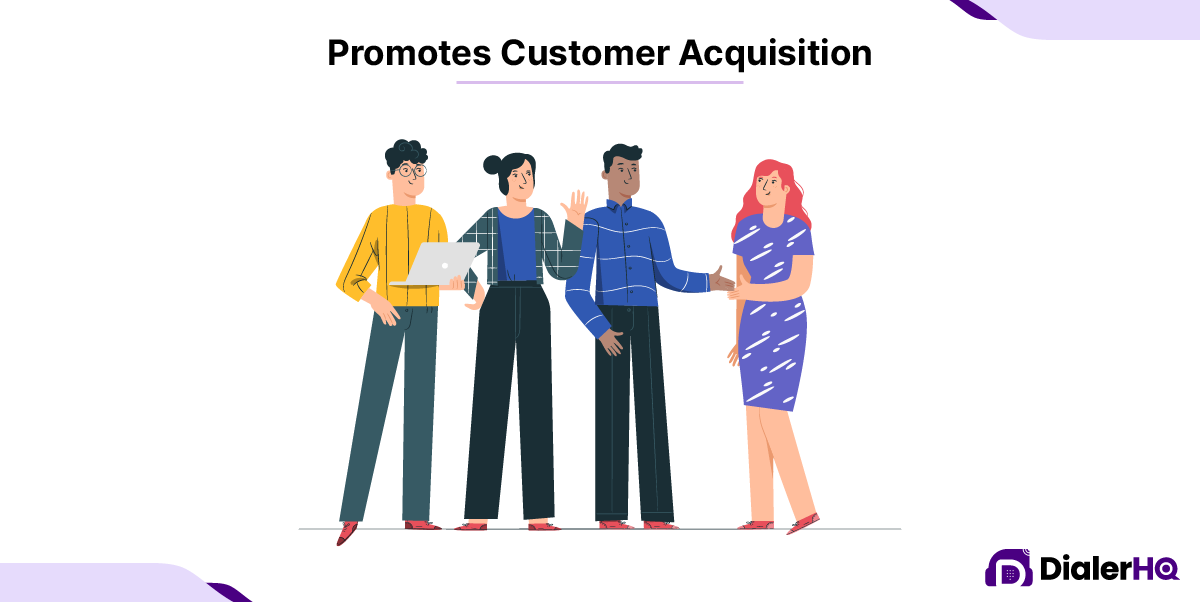
Given the hustle-bustles of the rapidly evolving world, garnering people’s attention toward your business is tedious. When you set up an outbound call center with skilled agents who can call out the uniqueness of your business, it is more likely that your product and service offerings will get etched on your customers’ minds. This increases the chance of conversion and acquisition.
3. Gain a competitive advantage
Today’s marketplaces are high on competition. There are hundreds of other brands in the market, and for your offerings to stand apart from other players in the industry, you must reach out to prospects and market the features of your products and services.
When endeavoring to purchase a product or service, customers are more likely to choose from a brand they are familiar with. Outbound calls help create an awareness of your brand so customers feel more closely associated with your business. This way, outbound calls help businesses gain customer attention towards your business.
4. Wider access to sales expertise 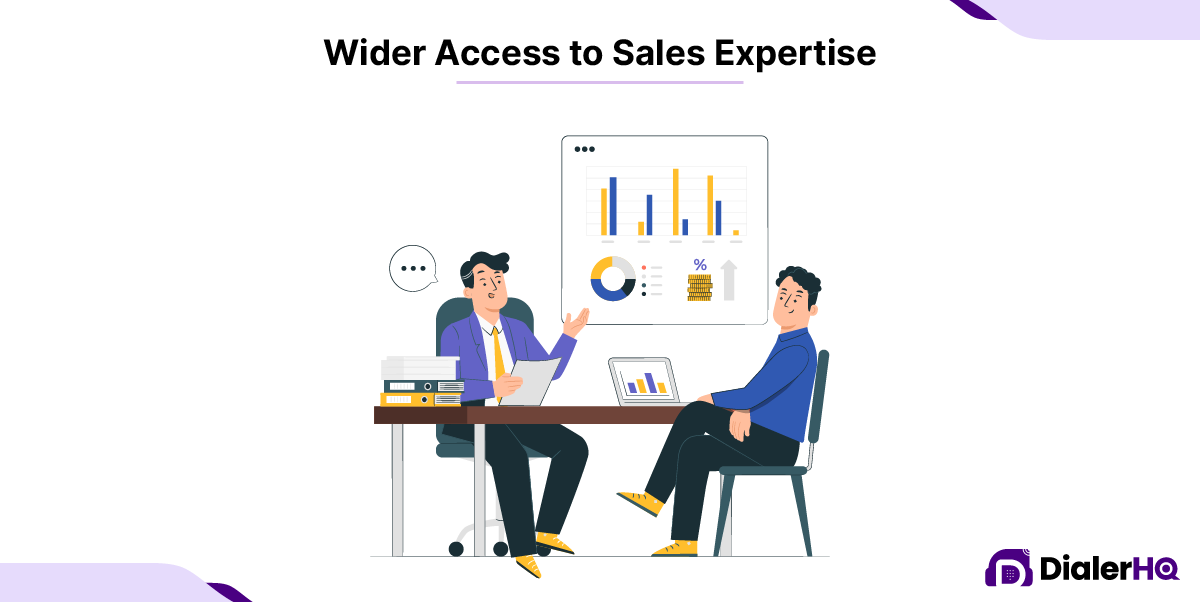
Outbound call centers house sales experts, and even if one or a few employees take off, they will likely be filled in. So, you don’t have to worry about employee absence. This is unlike an in-house sales team where employee absence impacts your business productivity.
How to Improve Inbound and Outbound Operations in Your Call Center?
While we have outlined the benefits of inbound and outbound call centers in the previous section, we have curated some of the strategies and tips you must follow to enhance your call center operations.
1. Watch Out for the Metrics
Data is the key. Set KPIs and keep an eye on the call center metrics to track performance. They help understand the efficiency of operations and decide if there is a need for enhancements. Following are some of the important metrics you must know while analyzing the outbound vs. inbound call centers.
Inbound call center metrics
- Average wait time
- Average call transfer rate
- Net promoter score
- Customer retention rate
- First call resolution rate
- Call abandonment rate
Outbound call center metrics
- Average handle time
- First call close
- Occupancy rate
- Call abandonment rate
- Conversion rate
- Calls per agent
2. Focus on customer experience
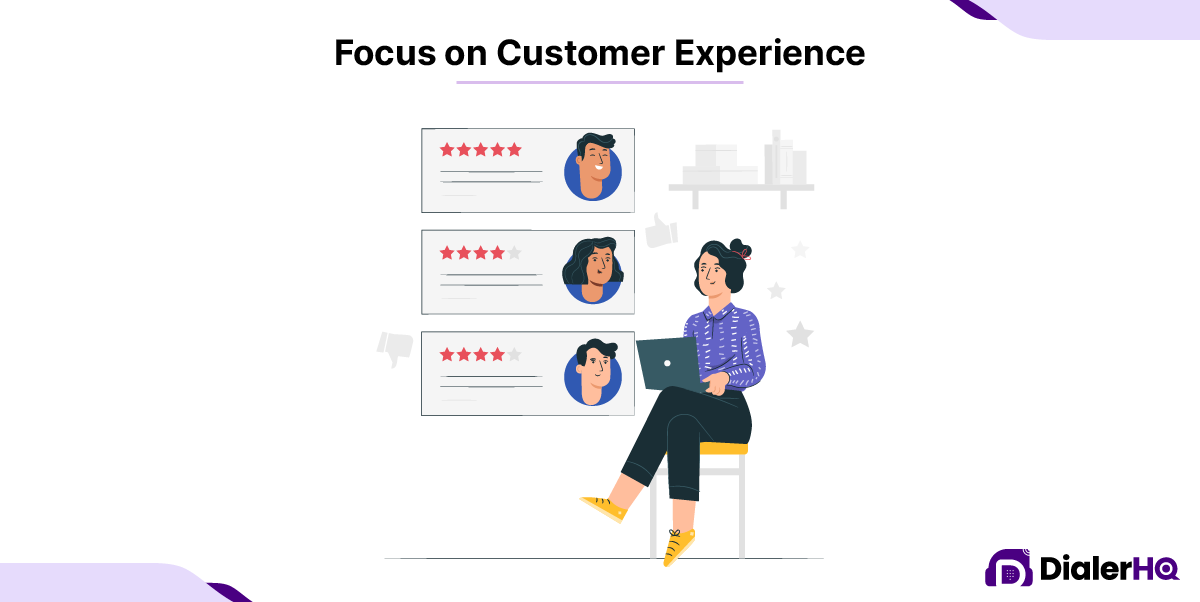
Make sure that while you build the call center services, you do so from the lens of your customers. They are the ones who are seeking support and assistance and so it is important that you need to deliver them quickly.
So, the ultimate objective of inbound and outbound call centers is to promote customer satisfaction and deliver a seamless experience. When you build your call center operations around customer needs, there are more chances that they will stay loyal to your brand for a long.
3. Train your agents
In a call center, agents run the show, so you must train them well. They must be educated enough to listen to customer problems and respond appropriately. Agent productivity and efficiency matter the most. Equip your call centers with modern tools with advanced features like call recording, call queuing, IVR, Automatic Call Distribution systems, etc. They help reduce agent burnout and promote the efficiency of call center operations.
Conclusion
Nature of calls, purpose, focus, and type of interaction are dominant aspects of discussions around inbound vs. outbound call centers. With inbound call centers, calls are initiated by customers to get answers to their questions or solve the problems they endure in using the products or services of a brand. At the same time, outbound calls are initiated by customer care agents to promote the sale of a product or service.
Whether you require an inbound or outbound call center depends on the nature of your business and the industry you operate in. Either way, you must equip the space with efficient call center management software to enhance the quality of service delivery.
FAQs
Both inbound and outbound call centers are important and successful in their own sense. And whether a business needs an inbound or outbound call center depends on the nature of its offerings. As outbound call centers aim to promote sales, they are important from a revenue point of view.
Generally, there are three types of call centers, including,
- Inbound
- Outbound
- Blended
Though inbound and outbound calls serve different purposes and business requirements, inbound is better than outbound calls in terms of cost. It also lets customers have control over the entire sales process.
Sindhu Bharathi is an inquisitive learner and prolific B2B/SaaS writer with experience of working in diverse industries. She has a demonstrated history of delivering well-researched, original content. From generating long-form articles, blogs, and white papers to social media copies, she pivots her skills to resonate with the medium and deliver compelling content that has the power to captivate the audience.
Updated : March 29, 2024

Subscribe to our newsletter & never miss our latest news and promotions.

